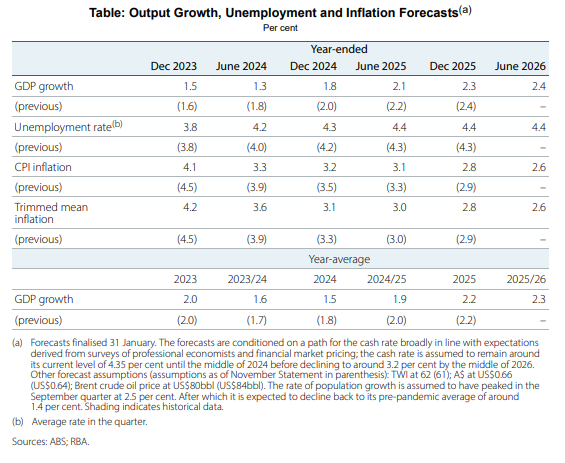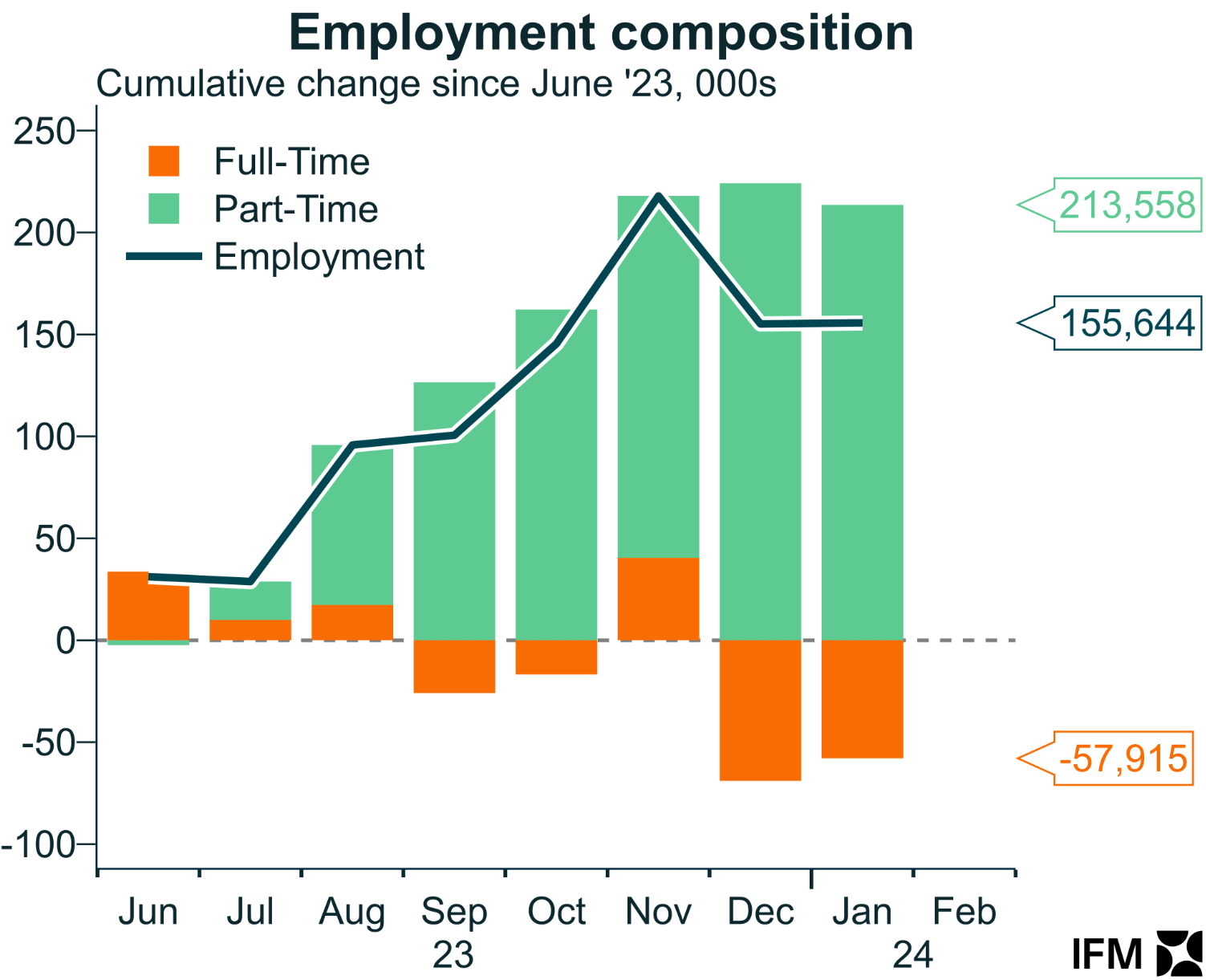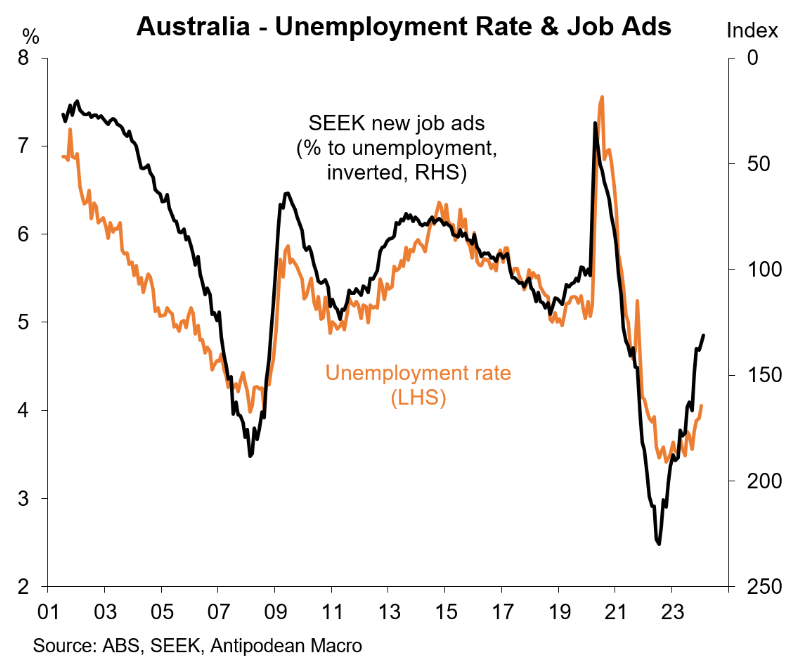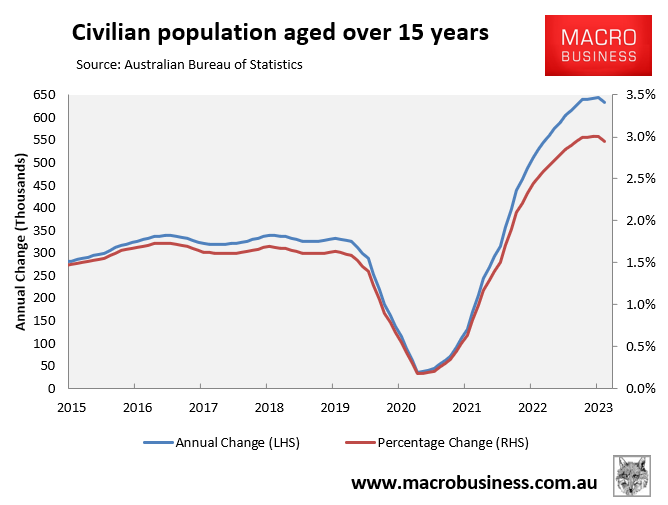Recall that the Reserve Bank of Australia’s (RBA) February Statement of Monetary Policy (SoMP) projected that Australia’s unemployment rate would end 2024 at 4.3% and only peak at 4.4% next year:

Shortly after these forecasts were released, the Australian Bureau of Statistics (ABS) released the January labour force survey, which revealed that Australia’s unemployment rate had risen to 4.1% – just 0.2% below the RBA’s end of year projection.
The internals were even worse, with full-time jobs contracting nearly 58,000 since June 2023:

Source: Alex Joiner
This contraction in full-time jobs has also been met with a significant decline in the number of hours worked across the economy, which have fallen for around six straight months:

On Thursday, we received more bad news on the Australian labour market, with Seek reporting that new job ads declined another 2.5% in February to be 18.6% lower year-on-year.
The number of applicants per job also rose by 2.9% over the month.
The below charts from Justin Fabo at Antipodean Macro tell the tale.
The next chart plots Seek’s job ad series against the official unemployment rate and suggests that unemployment will continue to rise over the coming months:

The situation is even more concerning when the huge surge in the nation’s labour supply, brought about by record net overseas migration, is taken into account.

The number of applicants per job ad has surged well above pre-pandemic levels, which points to an even sharper rise in Australia’s unemployment rate:

This surge in job applicants has also been driven by the two largest states, Victoria and New South Wales, which are receiving the lion’s share of migrant workers:

Clearly, it is only a matter of months before the RBA’s 4.3% unemployment forecast is breached.
And when it is, the RBA will be forced to pivot on interest rates to prevent the situation from getting worse.
Watch the unemployment rate to see where interest rates are headed. The sharper-than-expected rise in unemployment will force the RBA to cut rates in the second half.

